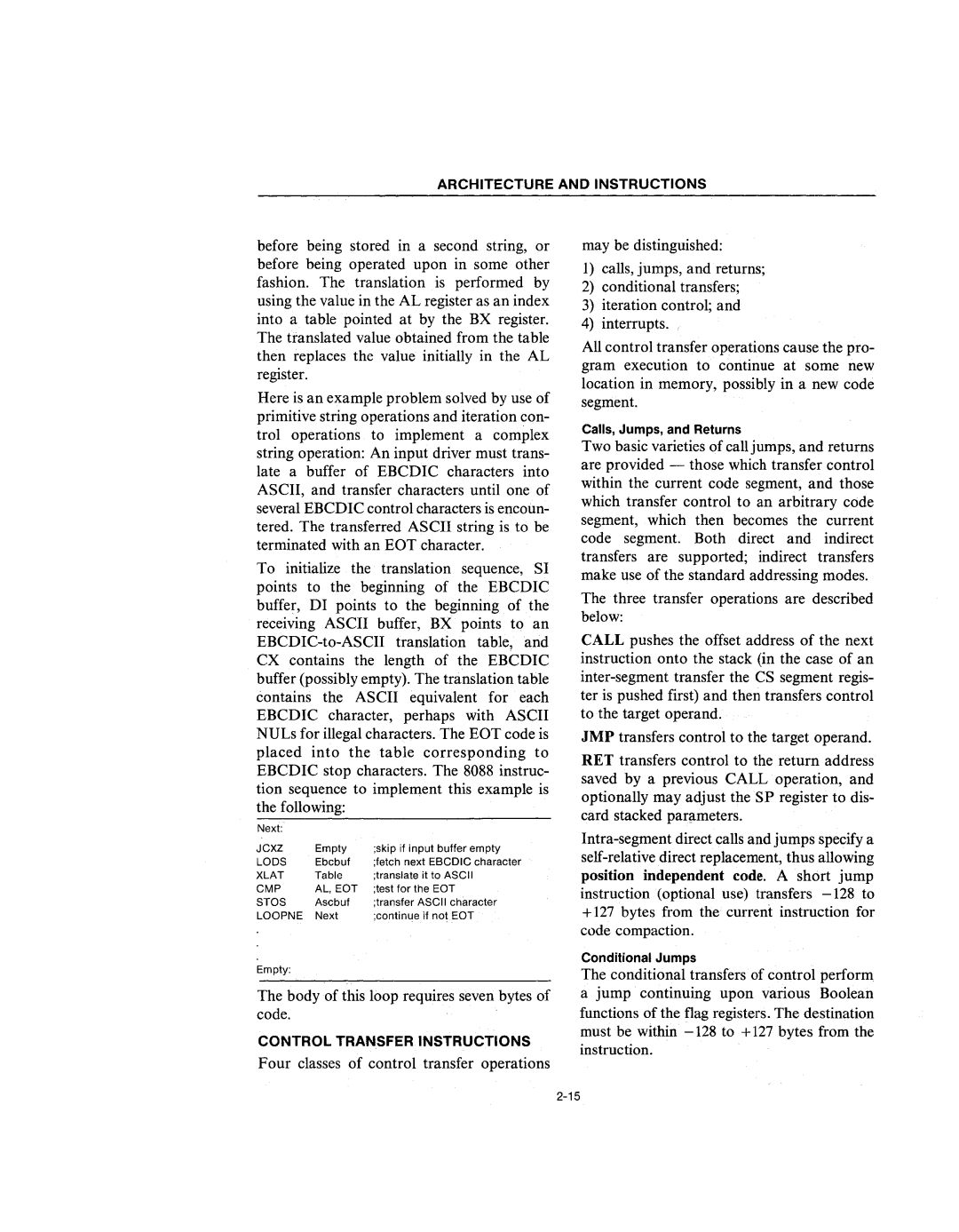
ARCHITECTURE AND INSTRUCTIONS
before being stored in a second string, or before being operated upon in some other fashion. The translation is performed by using the value in the AL register as an index into a table pointed at by the BX register. The translated value obtained from the table then replaces the value initially in the AL register.
Here is an example problem solved by use of primitive string operations and iteration con- trol operations to implement a complex string operation: An input driver must trans- late a buffer of EBCDIC characters into ASCII, and transfer characters until one of several EBCDIC control characters is encoun- tered. The transferred ASCII string is to be terminated with an EOT character.
To initialize the translation sequence, SI points to the beginning of the EBCDIC buffer, DI points to the beginning of the receiving ASCII buffer, BX points to an
Next: |
|
|
JCXZ | Empty | ;skip if input buffer empty |
LODS | Ebcbuf | ;fetch next EBCDIC character |
XLAT | Table | ;translate it to ASCII |
CMP | AL, EOT | ;test for the EOT |
STOS | Ascbuf | ;transfer ASCII character |
LOOPNE | Next | ;continue if not EOT |
Empty:
The body of this loop requires seven bytes of code.
CONTROL TRANSFER INSTRUCTIONS
Four classes of control transfer operations
may be distinguished:
I)calls, jumps, and returns;
2)conditional transfers;
3)iteration control; and
4)interrupts.
All control transfer operations cause the pro- gram execution to continue at some new location in memory, possibly in a new code segment.
Calls, Jumps, and Returns
Two basic varieties of call jumps, and returns are provided - those which transfer control within the current code segment, and those which transfer control to an arbitrary code segment, which then becomes the current code segment. Both direct and indirect transfers are supported; indirect transfers make use of the standard addressing modes.
The three transfer operations are described below:
CALL pushes the offset address of the next instruction onto the stack (in the case of an
JMP transfers control to the target operand.
RET transfers control to the return address saved by a previous CALL operation, and optionally may adjust theSP register to dis- card stacked parameters.
+127 bytes from the current instruction for code compaction.
Conditional Jumps
The conditional transfers of control perform a jump continuing upon various Boolean functions of the flag registers. The destination must be within
